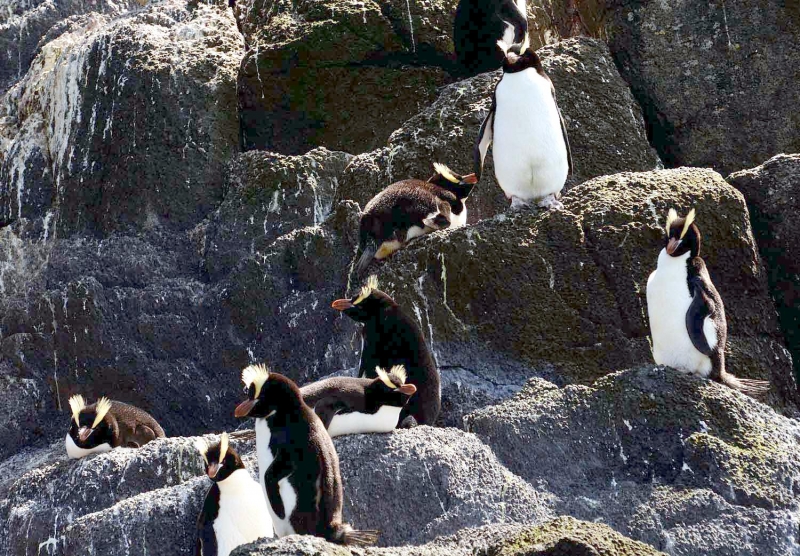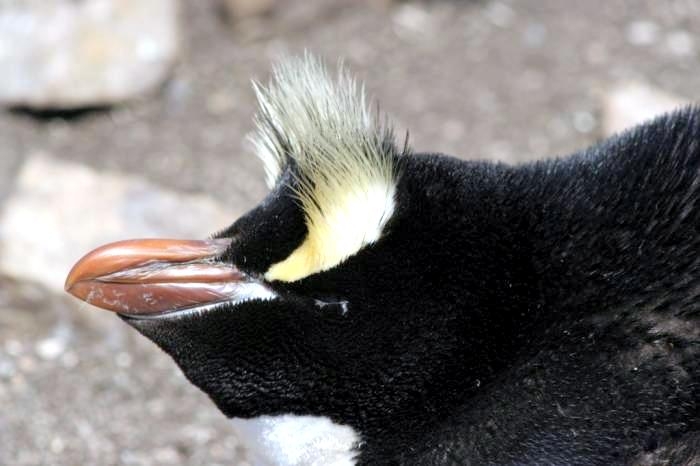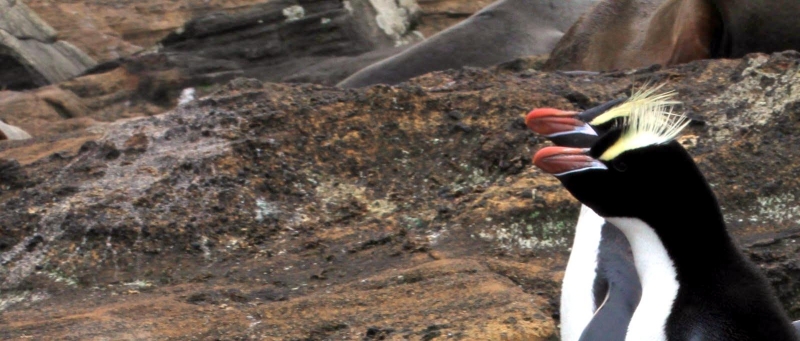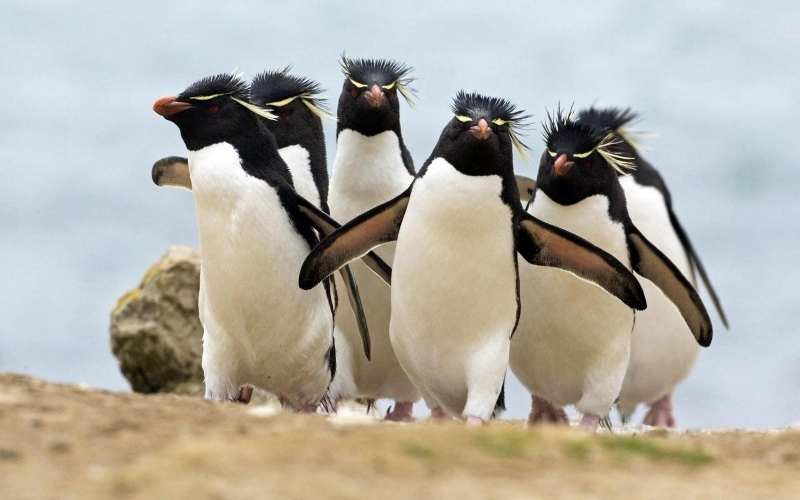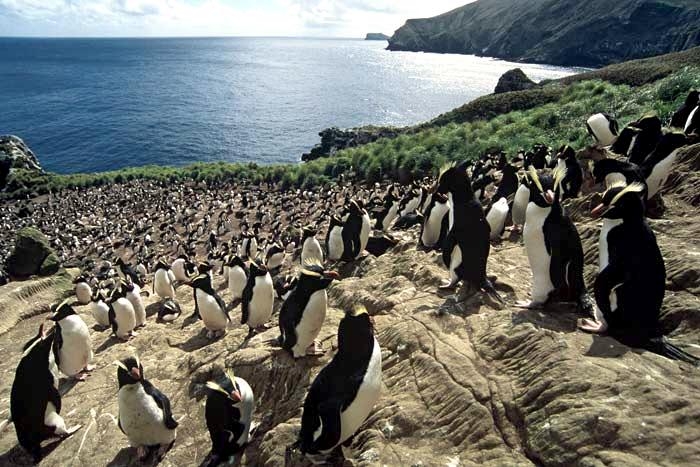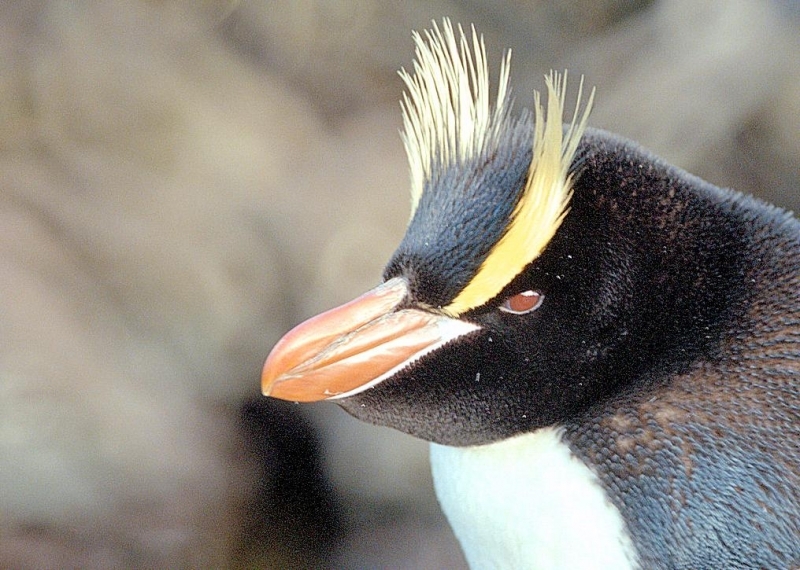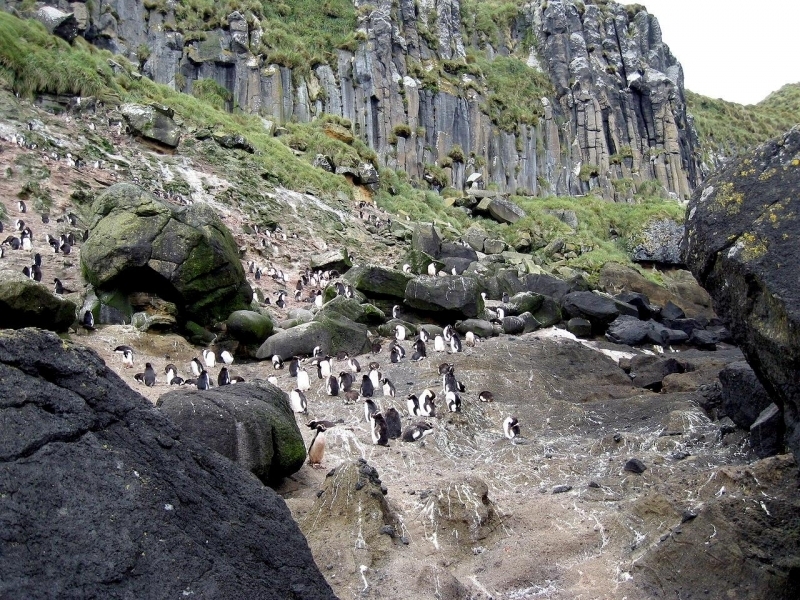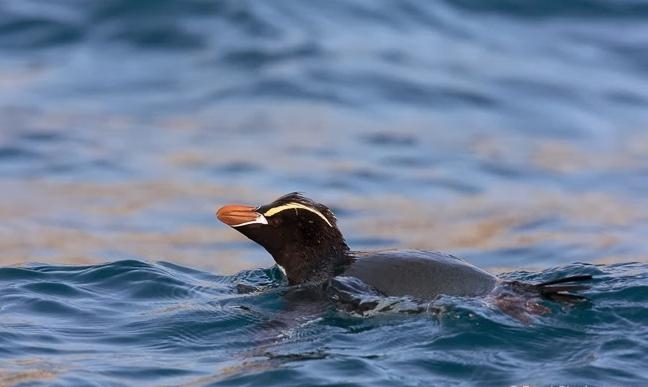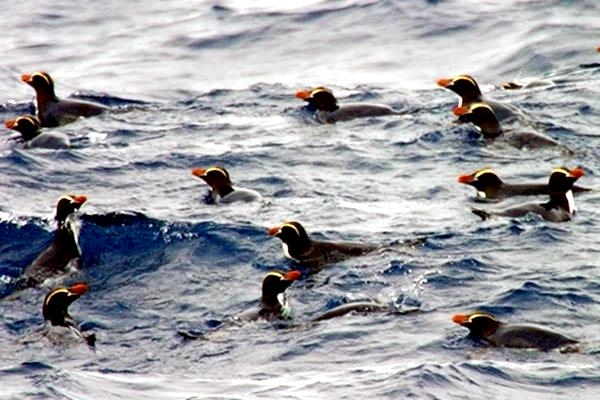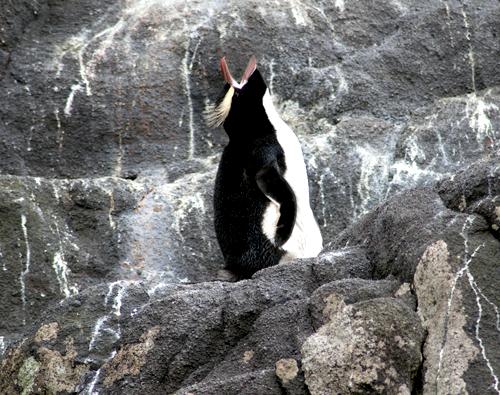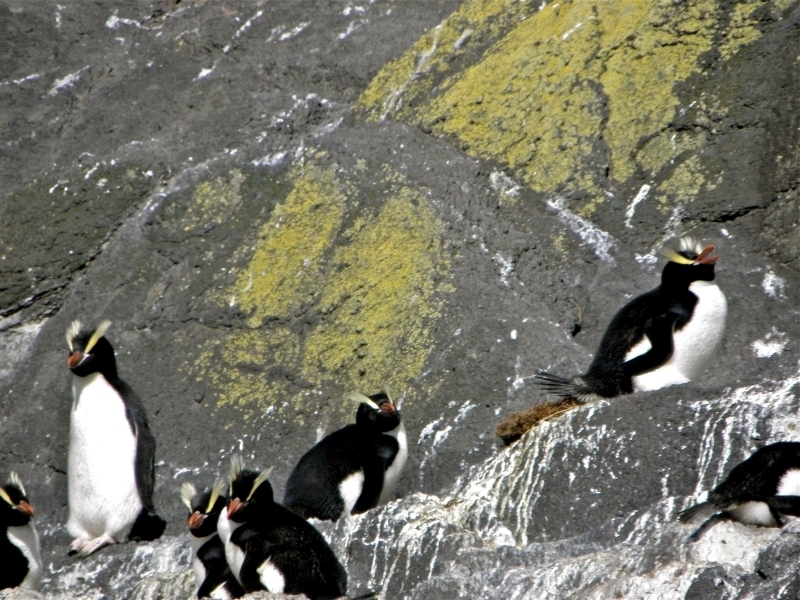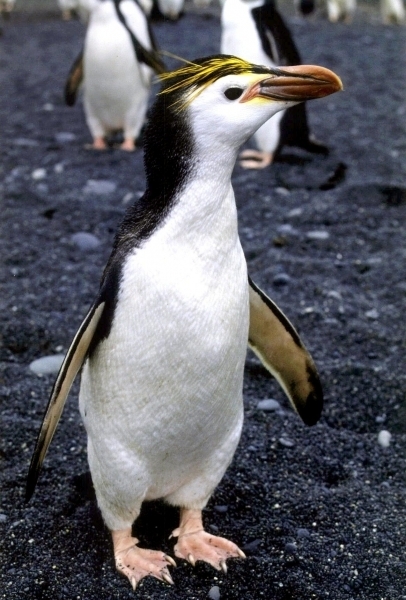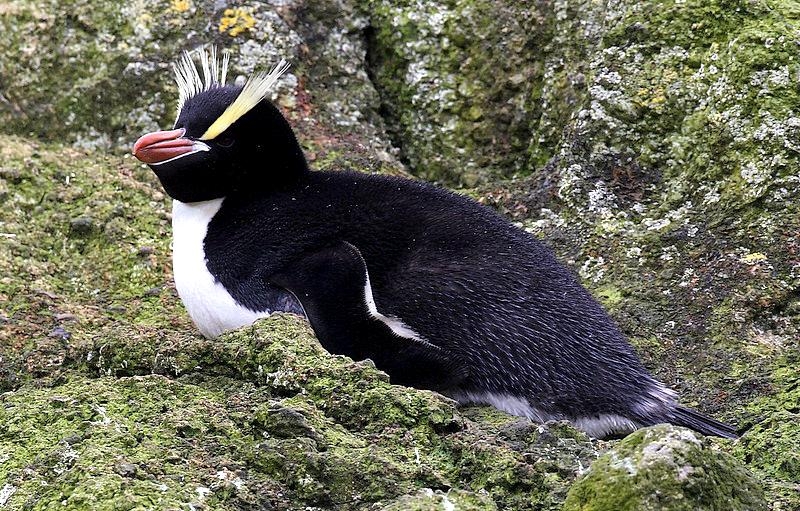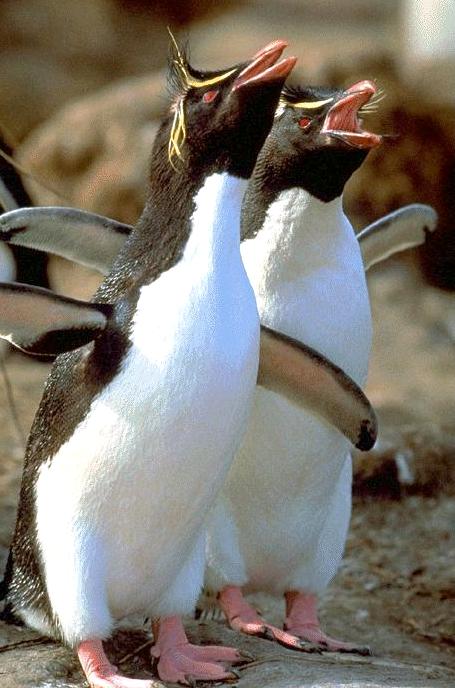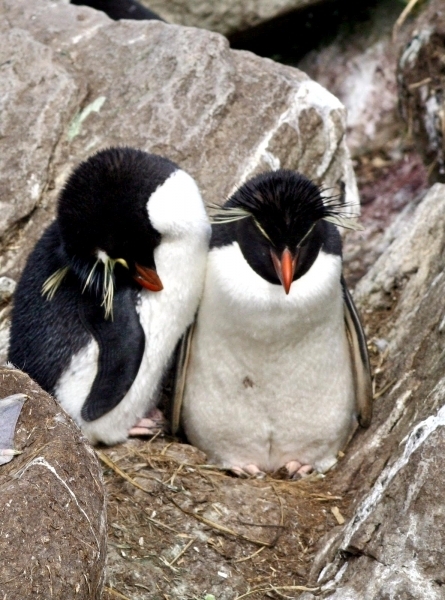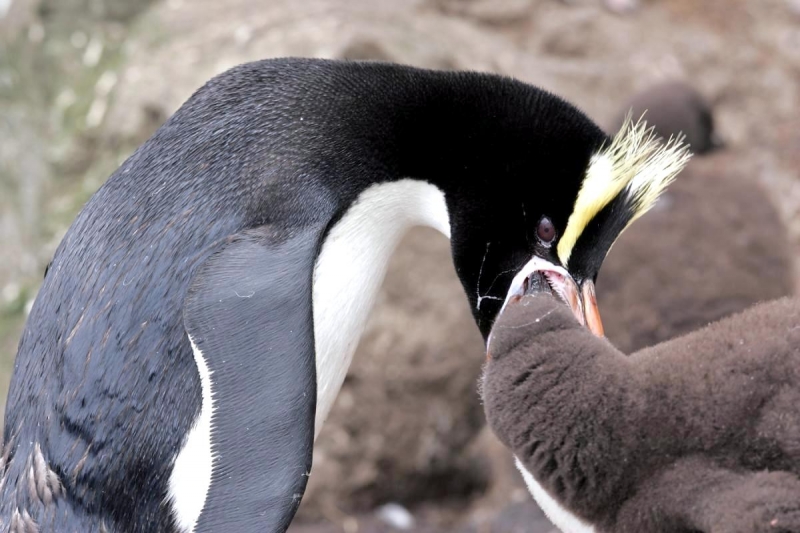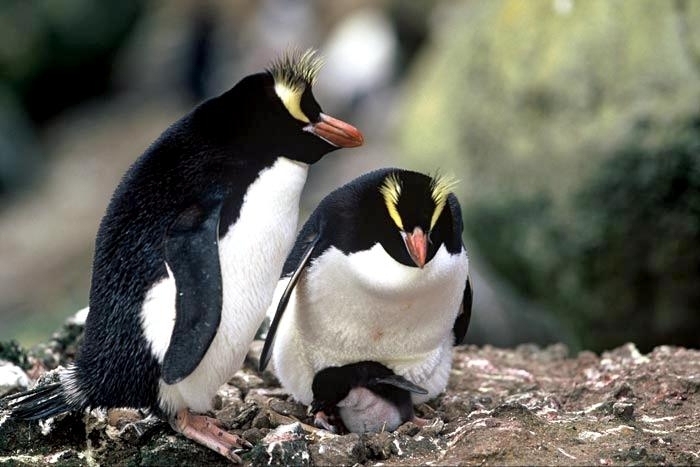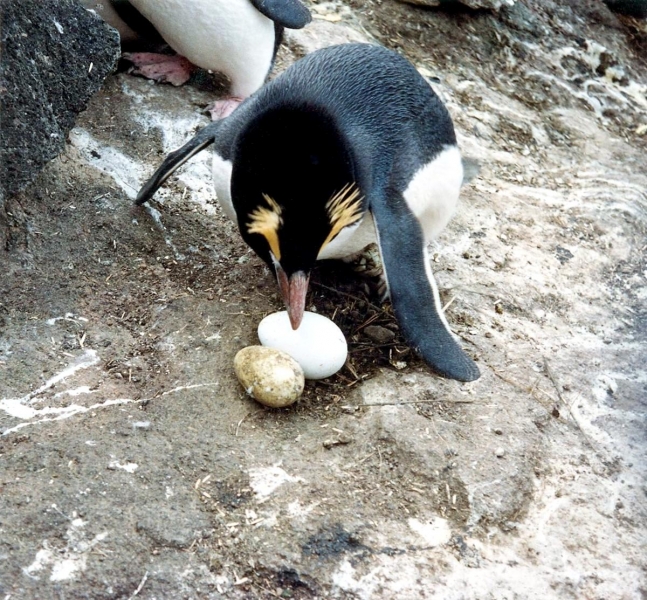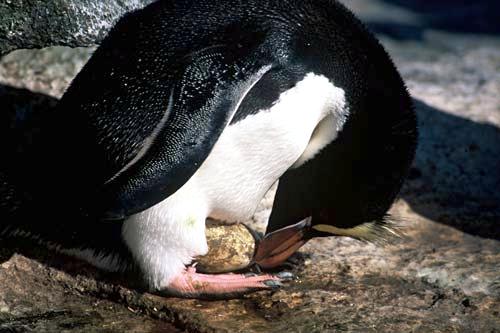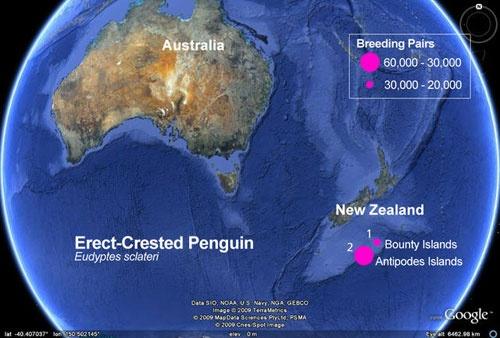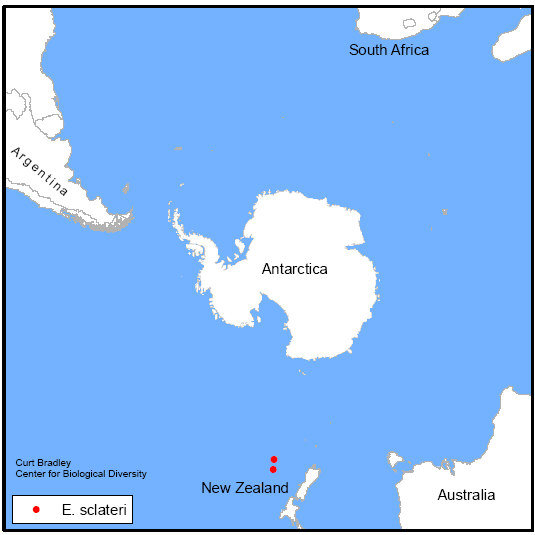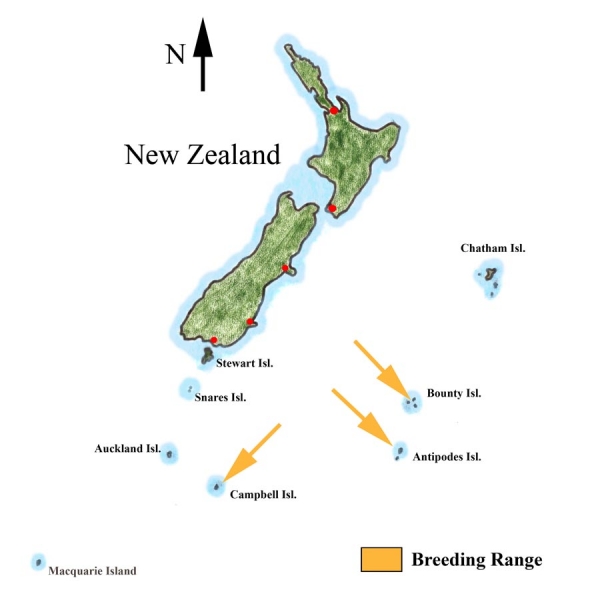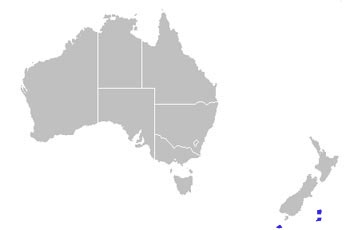“Eudyptes sclateri”
Erect-crested Penguins are the largest of the 6 species of crested penguins standing about 50 centimeters tall and weighing up to 4 kilograms. Erect-crested Penguins are also known as “Big-crested Penguins”. The “erect crest” component of their common name refers to the wide yellow streaks that point upward from above their eye areas. Their characteristic brush-like crests distinguish them from other species, however they are easily confused with their cousins the Fiordland-crested Penguin and Snares-crested Penguin. The word Penguin first appears in the 16th century as a synonym for the now extinct Great Auk. When European explorers discovered what are today known as Penguins in the Southern Hemisphere, they noticed their similar appearance to the Great Auk of the Northern Hemisphere and named them after this bird, although they are not closely related. Males are generally larger than the females. Adults have black heads and throats with a wide yellow stripe on their face that extends above their eye forming the erect crest. This species sports the classic tuxedo with a black back & white belly. The dorsal (upper) side of their flippers are black with white edges and white with a black patch at the tip underneath. Erect-crested Penguins have long, slender beaks that are dark orange in color. Juveniles are distinguished from adults by their slight difference in color and shorter crests.
Erect-crested Penguins are a very social species with many displays and vocalizations. Like other penguin species, mating Erect-crested pairs recognize each other both by sight and the distinct vocalizations of individual birds whose harsh, low-pitched calls are heard mainly during the day. Aggressive displays are characterized by the use of the crest and by a lowered head, combined with a growling or barking. Fighting behavior includes twisting of bills, biting and flipper beat. Juveniles are sometimes found molting on the New Zealand mainland. Erect-crested Penguins feed on small fish & krill near the surface and may travel hundreds of kilometers at a time to hunt for prey. They breed in large colonies on rocky coasts, often high up steep inclines where nests are formed on rock platforms. Erect-crested Penguins often breeds near Rockhopper Penguin colonies. Courtship displays include an enthusiastic greeting with an open bill, vertical head swinging, trumpeting, quivering, bowing and preening. Males return to the breeding colonies in September competing & fighting for nest sites. The females join the males 2-weeks later and work together to form nests made of mud, stones and grass. Female Erect-crested Penguins lay 2 eggs, the first of which is lost 98% of the time, leaving the larger second egg to be incubated. Incubation lasts for about 35 days and the chicks are fed regurgitated food by the females until they fledge in February. Adults return to sea after molting in March. These seabirds are only found primarily on New Zealand’s Antipodes Islands and Bounty Islands with smaller populations around the Auckland Islands and Campbell Islands.












